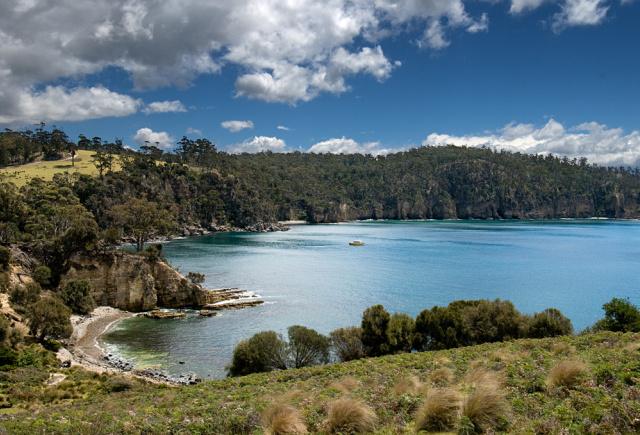We have all the endemic bird species as well as a number of other endangered species. The mammal fauna is pretty intact still. We have super abundant eastern quolls which are struggling on mainland Tasmania and have gone extinct on mainland Australia.
It's just this amazing collection of animals and ecosystems. We have a couple of threatened ecological communities down here as well. It's a really beautiful place with such abundant wildlife.
There's also a great community, that is really supportive of conservation initiatives. Bruny Island is really a stronghold for the eastern quoll. It's a beautiful little marsupial. They're also known as a native cat or a marsupial cat. People call them that because they have that sort of body shape.

They're really abundant on Bruny, particularly on North Bruny Island. The environment on North Bruny is a bit different to the south. It's a bit drier, it's a bit more open, and that's the habitat that the eastern quolls really love. They do really, really well on North Bruny Island. We do have them on South Bruny as well, just not as many in those bigger numbers.
Their scientific name - Dasyurus viverrinus - actually means ferret-like. It gives you a good impression I think of what they look like with their little pointy nose and little fluffy tail.
They come in two colour morphs. I like to call it chocolate and caramel, a really dark colour and more of a lighter, fawny colour. And they will have mixed colours in a single litter.
One female can have both light and dark morph juveniles. They can have up to six babies at a time and then usually around the end of late summer they leave their mum, and they start to wander around. We'll see them all over the place on Bruny Island - they're really adorable.


Dr Catherine Young
We have all the endemic bird species as well as a number of other endangered species. The mammal fauna is pretty intact still. We have super abundant eastern quolls which are struggling on mainland Tasmania and have gone extinct on mainland Australia.
It's just this amazing collection of animals and ecosystems. We have a couple of threatened ecological communities down here as well. It's a really beautiful place with such abundant wildlife.
There's also a great community, that is really supportive of conservation initiatives. Bruny Island is really a stronghold for the eastern quoll. It's a beautiful little marsupial. They're also known as a native cat or a marsupial cat. People call them that because they have that sort of body shape.

They're really abundant on Bruny, particularly on North Bruny Island. The environment on North Bruny is a bit different to the south. It's a bit drier, it's a bit more open, and that's the habitat that the eastern quolls really love. They do really, really well on North Bruny Island. We do have them on South Bruny as well, just not as many in those bigger numbers.
Their scientific name - Dasyurus viverrinus - actually means ferret-like. It gives you a good impression I think of what they look like with their little pointy nose and little fluffy tail.
They come in two colour morphs. I like to call it chocolate and caramel, a really dark colour and more of a lighter, fawny colour. And they will have mixed colours in a single litter.
One female can have both light and dark morph juveniles. They can have up to six babies at a time and then usually around the end of late summer they leave their mum, and they start to wander around. We'll see them all over the place on Bruny Island - they're really adorable.

You might like...

A place of wild diversity

The magic of Bruny Island

Species, emotion and place

Bruny Island launch: Dr Tonia Cochran on its global significance
Newsletter
Sign up to keep in touch with articles, updates, events or news from Kuno, your platform for nature
